40 years on from the dinner that shook footy, the architect of the plan Ian Collins reveals all
40 years ago this week footy administrators gathered for dinner and were hit with a rebel league reality that would forever change the game. SHANNON GILL speaks to the architect of the plan that foreshadowed the AFL, Ian Collins.
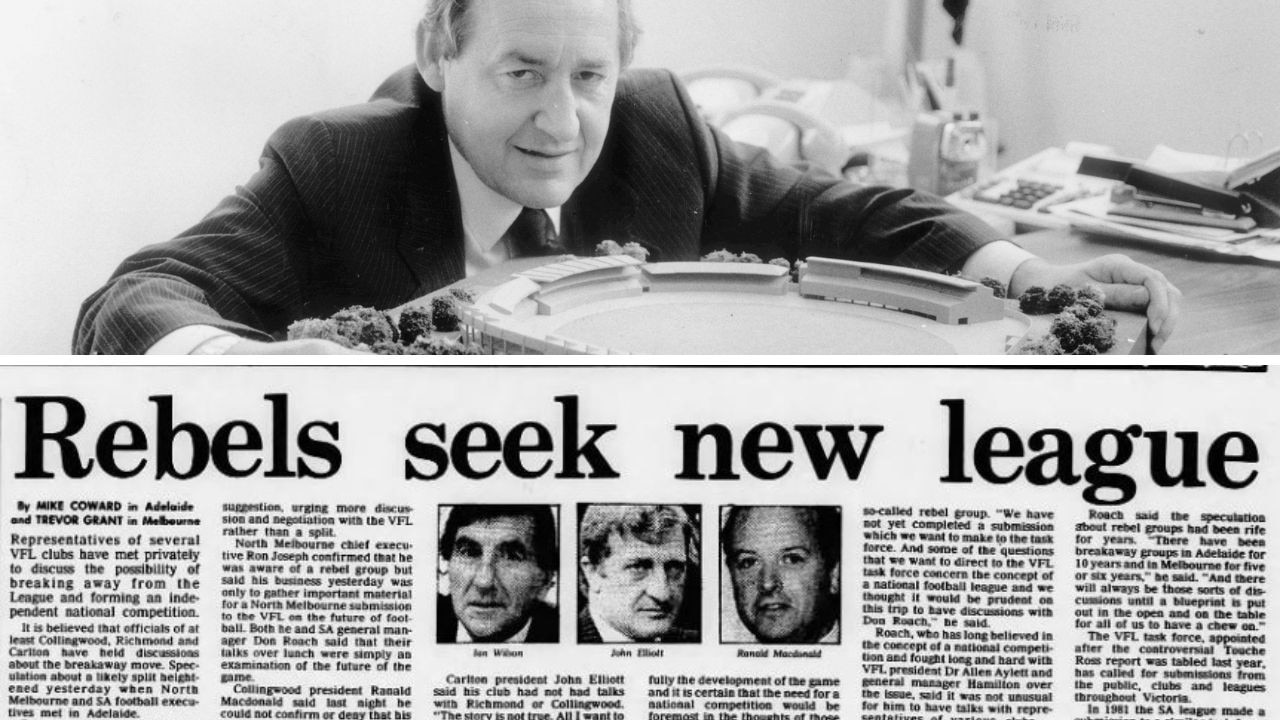
AFL
Don't miss out on the headlines from AFL. Followed categories will be added to My News.
It was football’s version of the Last Supper and more than one of the attendees thought Ian Collins and Carlton were playing the part of Judas.
“(North Melbourne director) Albert Mantello read the report and threw it back at me, ‘that’s no f…in’ good!’,” Collins tells CODE Sports.
40 years ago this week arguably the single most important meeting of football minds since the code was invented occurred.
Collins, the then Carlton general manager who would eventually become the AFL’s second-in-charge, was the man with the plan.
Collins turns 82 soon, yet goes to the gym each day and still seems as robust as he did on the field or in the boardrooms during a lifetime in the game.
His recall of the time is sharp, and his assessment remains typically blunt.
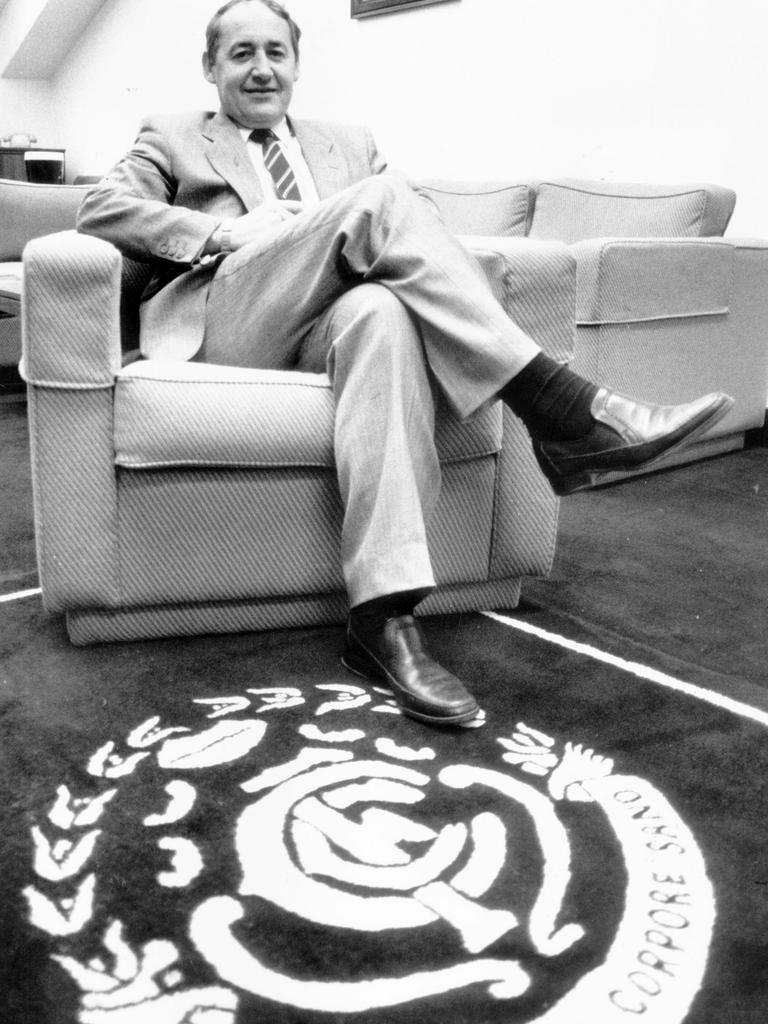
“We had eleven VFL teams in Melbourne in the same market eating ourselves up. The only value was going national.”
The anniversary is even more striking given the 2024 finals series will be just the second non-covid September where less than four finals will be held in Victoria.
A possibility that was scandalous in 1984.
Footy’s World Series Cricket
When John Elliott took over as the Blues’ President he was being feted as a business titan and perhaps a future liberal prime minister. A corporate bulldozer, he’d hit the VFL with all the subtlety of a well-timed shirtfront.
He believed the VFL was in poor health and stubbornly avoided change. As money had come into the game, clubs had been waging an unsustainable inflation war chasing players via transfer fees.
“There was a lot of turmoil,” Collins says.
“Eight of the twelve clubs were technically insolvent and the main reason was transfer fees being paid. The market was too small.”
The VFL had dipped their toes in expanding to Sydney, but change was moving at glacial pace. The clubs ultimately voted and the status quo remained.
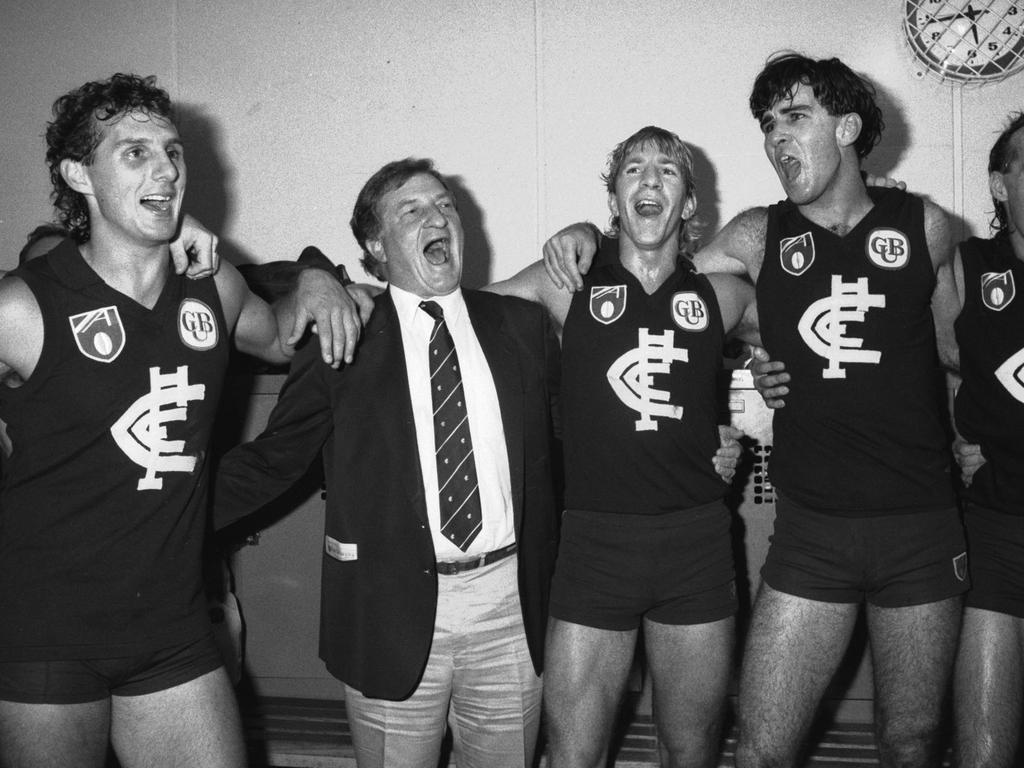
Elliott gave Collins the order to take the ideas out there that hadn’t been acted upon, and some of their own, to dream up something different.
So over the course of 1984, Collins pieced together a report which was the most radical proposal in football history.
It would map out a breakaway from the VFL to create a rebel national league.
“It was like Packer and cricket… footy’s World Series Cricket.”
As the richest and most successful club of the era Carlton lorded over the league. Anything they were involved in tended to arouse suspicion, so after work started, the Carlton crew thought they needed to find allies.
The Presidents of Collingwood and Richmond, Ranald MacDonald and Ian Wilson, along with the general manager of Melbourne Dick Seddon were invited to secret weekly meetings where Collins would update on his work.
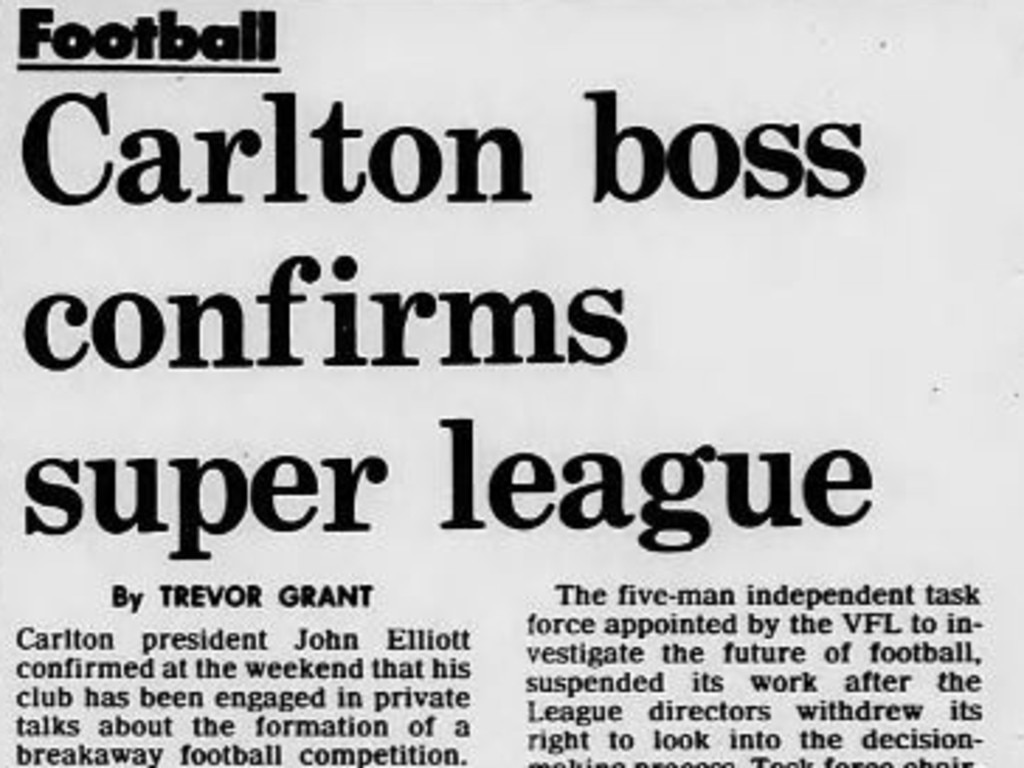
Then there were clandestine visits to Western Australia and South Australia.
Similar issues abounded in those states, but in the case of Western Australia their sustainability was woven into Victoria’s. The WAFL clubs were being kept afloat by transfer fees being received from VFL clubs.
“If you spoke to Bill Walker who was running Swan Districts he’d say ‘we sell two players to you mugs in Victoria every year, and it funds our whole club,” Collins says.
The Collins plan wanted two clubs from the WAFL and two from the SANFL for the breakaway league. It reached farcical levels when Collins met with South Australian club Norwood.
“They had a board meeting where we came and talked about the national league and their involvement. Then it all blew up and Norwood denied everything, they denied we’d even been there!”
Word started to leak that Carlton and Elliott were canvassing clubs across Australia. There were denials, then carefully worded clarifications as the season went on.
“So we thought it was better to bring enemies inside the tent,” Collins remembers.
The Mt Macedon meeting
On a cold night in early September, administrators sworn to secrecy trekked to Elliott’s corporate getaway in Mt Macedon on the outskirts of Melbourne to be wined, dined and find out what the hell was going on.
Footscray President Tony Capes refused the secrecy caveat so declined, and history says only nine clubs were actually represented.
Though Collins says that doesn’t tell the full story of who was in the room..
“Some were there that probably would never admit to being there…it was a bit like that.”
Once the meals came out they got the future of footy right between the eyes courtesy of Collins 48-page report titled ‘A proposal for reconstructing the existing competition to make it viable for the long term.’
The title may have been drab, but its content wasn’t.
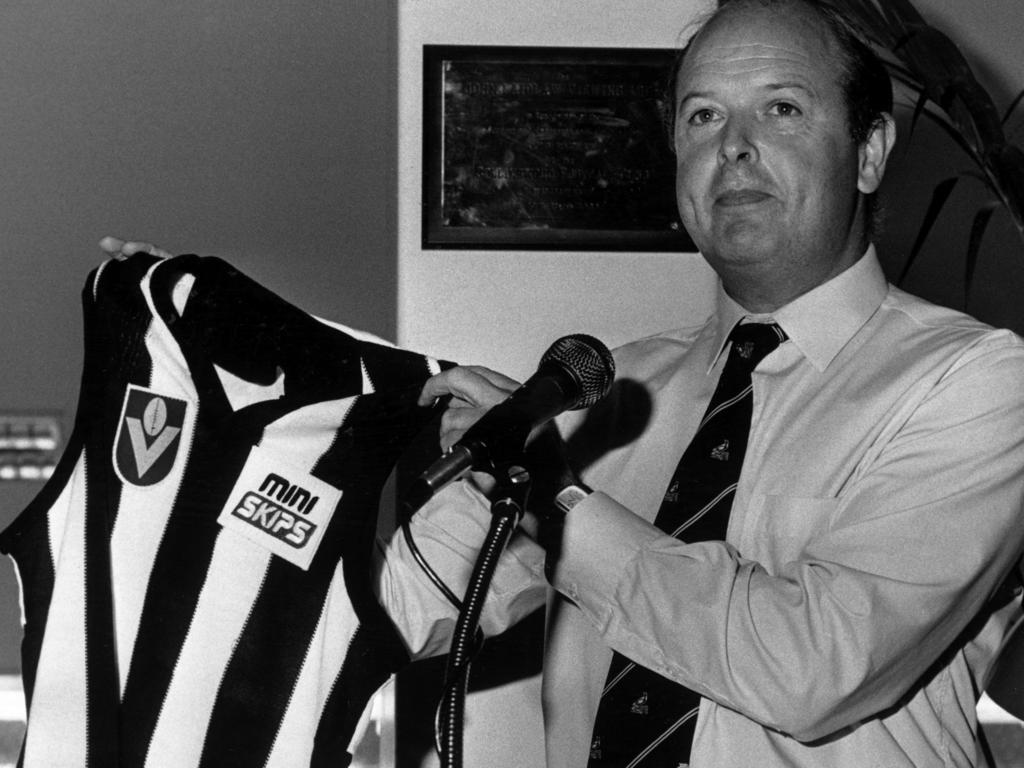
All the ills of the Leagues and its clubs were detailed. Clubs were spending beyond their means and if the authorities took a proper look many would be closed tomorrow with directors liable.
They were on a freight train to oblivion unless it changed tracks.
Yet there was a way out. Of sorts.
The report picked up all the threads that were discussed as solutions then dismissed for tradition, and tied them together coherently.
A player draft with regulated player movement.
Ground rationalisation.
Spreading games across Friday to Monday, both day and night.
And going national.
“The money was always going to be in TV rights,” Collins says today, so they moulded a product that could start paying the bills the clubs had racked up.
There was also a nod to Elliott’s own free market politics in decentralising what went on at league level.
An independent commission would run the league, doing away with the board of 12 club directors but clubs would then be freed up to create their own enterprise and existence; an example was each club producing its own version of the ‘Football Record’.
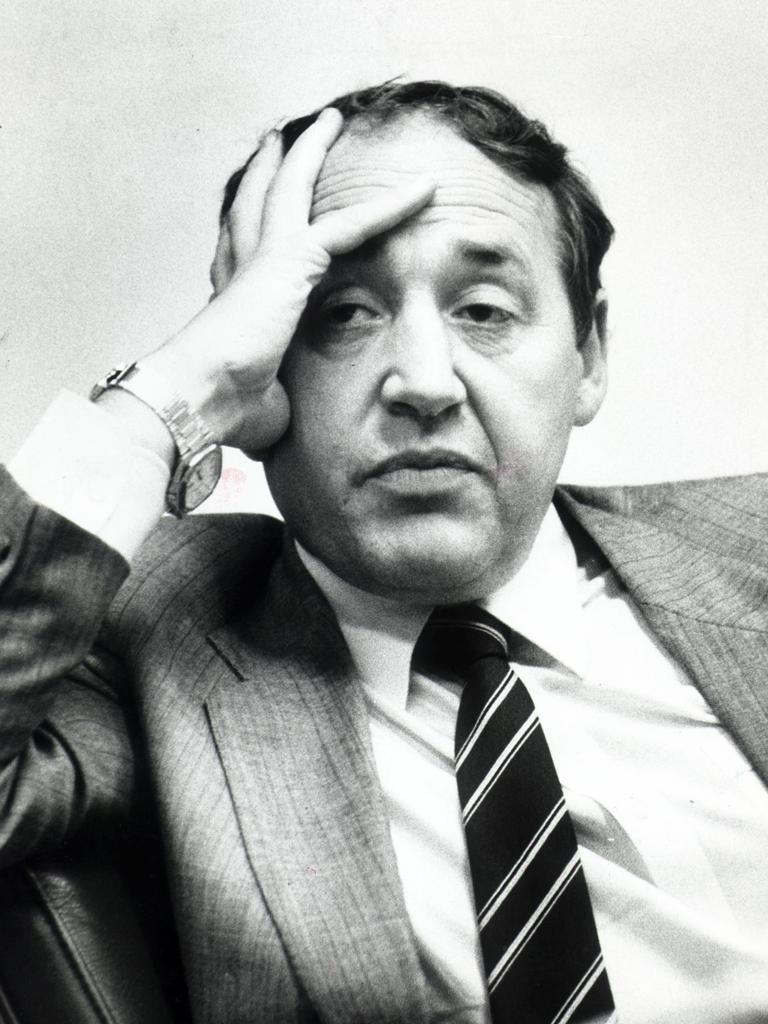
Every club would be invited into the breakaway competition to be called the Australian Football League and the legal advice was that they could leave the VFL freely.
Yet those involved would have to prove their financial bona fides, marked by a sustainable $250,000 worth of assets.
There were sixteen spots, but all those in the room knew many would fall short on that criteria. Twelve was the magic number and many wouldn’t make it to the ‘super league’.
Some around the table almost choked on their meals.
“There were two groups that night; the group that thought they’d be in it who were buoyant about the future,” Collins says.
“The other group were thinking ‘shit, where do we fit in, because we’re being propped up by the league.”
The Geelong President Dr Kevin Threlfall suddenly announced that he had to leave because the fog was rolling in, much to the bemusement of others who were ready to debate the seismic changes.
“He dropped his fork and left…there was humour as well as seriousness,” Collins remembers.
Losing the battle, winning the war
From there the night degenerated, and in some ways justified why the exercise had been undertaken. Getting all the clubs united on any sort of change was an impossible task.
“The best case scenario was that everyone was positive - we want a national comp, we want to bring interstate teams and we want to run our own race. But there were ones who couldn’t run their own race like Footscray, Fitzroy, North Melbourne.”

Collins drove home with Seddon and North Melbourne’s General Manager Ron Joseph where the debate continued.
The main sticking point was stadiums, could the league work without VFL Park, and most likely the MCG.
“We came to the consensus that we needed to do it through the league, even though they’d been pretty weak up until that point.”
The next day Collins lobbed to the VFL offices with Seddon and Joseph like naughty schoolboys to explain what had gone on to shaken league officials.
The battle for the breakaway league was lost that night, but ultimately Collins and Co. won the war through their brinkmanship. By threatening to breakaway, the league was shocked into change.
Concurrently the league had a task force looking at its future, and the Collins report became the most influential submission to it. The independent examiners agreed with most of it.
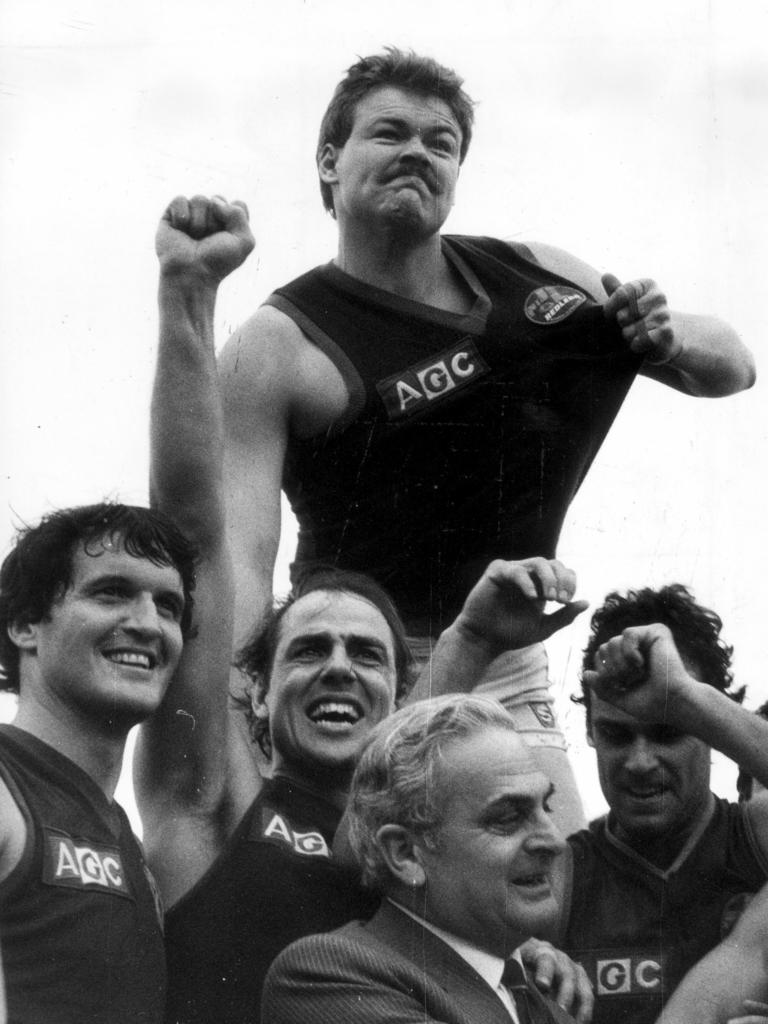
First it was a commission formed just months later to replace the old board of club directors. Then it was a draft. Then it was national expansion, albeit more slowly, including Queensland and with newly created franchises.
By and large it would become the AFL that the breakaway plan had forecast.
Looking back, Collins thinks if the league hadn’t budged on change the breakaway “would have happened,” and that the plan may have got more support if it hadn’t come from Carlton.
The smaller clubs saw the Blues in the image of Elliott, the 1980s corporate predator, “but we were probably the only club with the balls to put it up,” Collins says.
Nationally, they had the word of Claremont, while Subiaco, Port Adelaide and Norwood were all in talks.

Those four clubs would have been part of the sixteen clubs invited, and the likely scenario would have seen them join Carlton, Collingwood, Essendon, Richmond, Melbourne, Hawthorn, Geelong and Sydney in the breakaway plan.
Fitzroy, Footscray, St Kilda and North Melbourne all would have struggled to make the financial threshold.
The report and the dinner combined to forcefully hold the league and its clubs over the edge of the abyss and accept some financial realities, which Collins says made it worthwhile.
“It worked out for the best, “ he reflects.
“The Macedon dinner took us from sitting back and moaning and groaning, because it was the catalyst for the league to get off their backside and go national.”
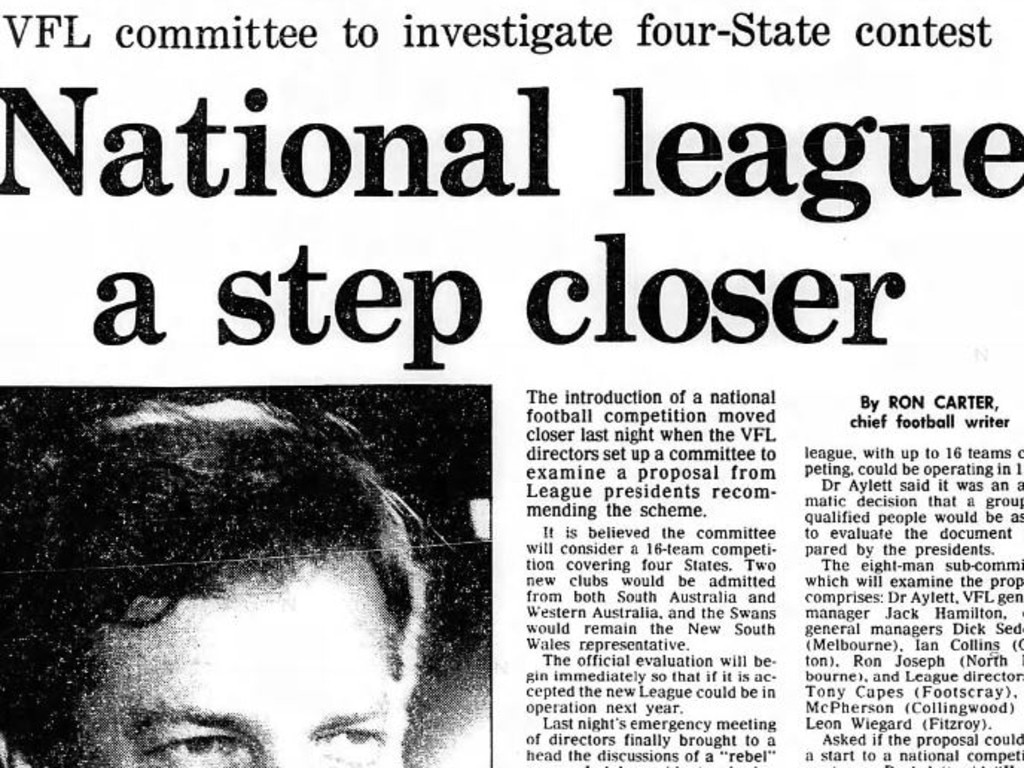
IAN COLLINS ON THE BIG AFL QUESTIONS TODAY
A 20th team: “Yes and it should be Darwin”
Night Grand Final: “Yes, had we gone with the diehards we’d still be all playing at 2:10pm on a Saturday every week.”
Wildcard Weekend/Final 10: “I think so.”

HOW THE AFL COULD HAVE LOOKED
The Clubs ‘invited’ to the breakaway AFL:
Carlton (VFL), Collingwood (VFL), Claremont (WAFL), Essendon (VFL), Fitzroy (VFL), Footscray (VFL), Geelong (VFL), Melbourne (VFL), Hawthorn (VFL), North Melbourne (VFL), Norwood (SANFL), Port Adelaide (SANFL), Richmond (VFL), St Kilda (VFL), Subiaco (WAFL), Sydney Swans (VFL)
The likely breakaway league composition:
Carlton (VFL), Collingwood (VFL), Claremont (WAFL), Essendon (VFL), Geelong (VFL), Melbourne (VFL), Hawthorn (VFL), Norwood (SANFL), Port Adelaide (SANFL), Richmond (VFL), Subiaco (WAFL), Sydney Swans (VFL)
More Coverage
Originally published as 40 years on from the dinner that shook footy, the architect of the plan Ian Collins reveals all









